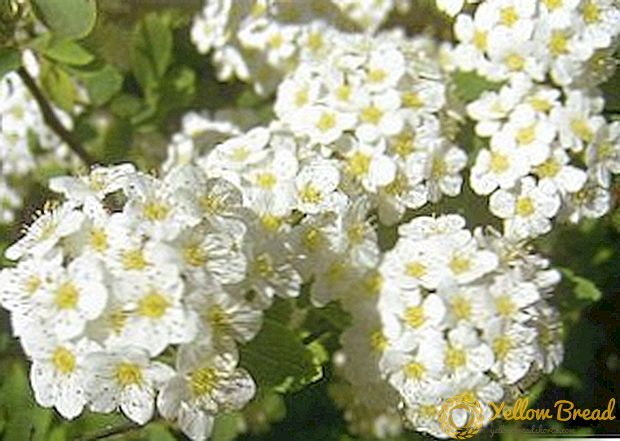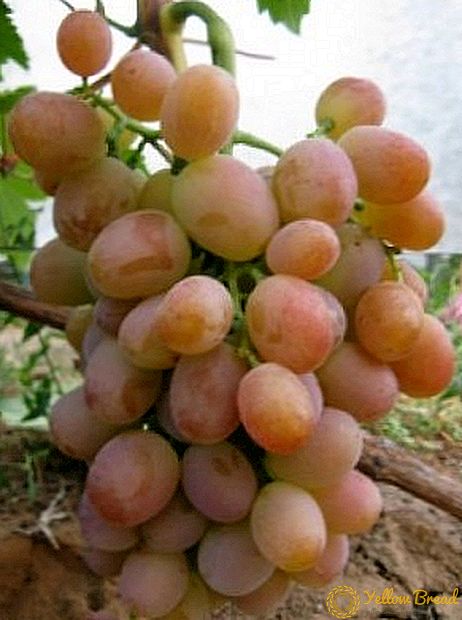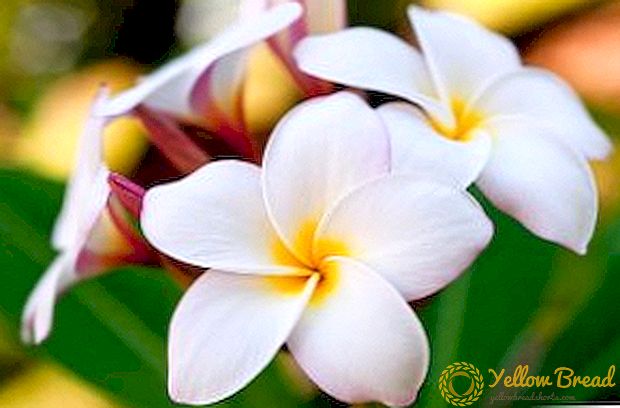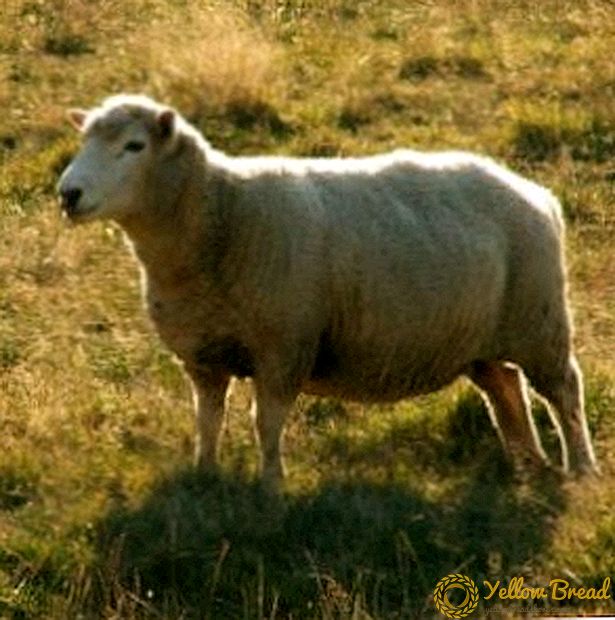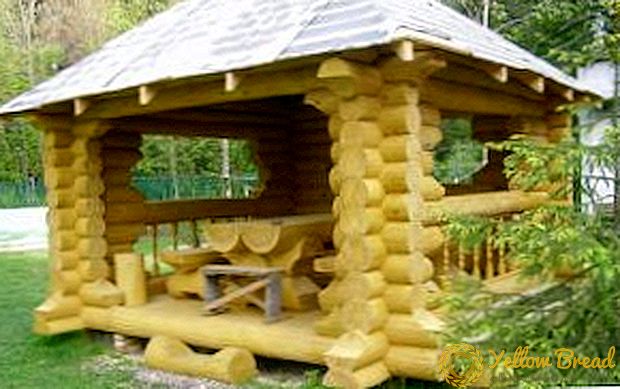 Daffodils are bright and delicate garden plants that delight the gardener's eye year after year. This flower is able to winter and bloom in the spring with new force. But when the daffodils bloomed, what to do next?
Daffodils are bright and delicate garden plants that delight the gardener's eye year after year. This flower is able to winter and bloom in the spring with new force. But when the daffodils bloomed, what to do next?
On the care of daffodils after flowering and will be discussed in the article.
- Care for outdoor flowers
- What to do with foliage
- Features feeding
- Mulching
- Rules care in a pot
- Fertilizer
- Stop watering
- Comfortable wintering
- Transplanting daffodils in the open ground (from the container)
- Terms and place of landing
- Landing pattern
- Aftercare
- Bulb separation after flowering
- Timing
- How to Dig Bulbs
- Narcissus division
Care for outdoor flowers
After the plants bloom, they continue to grow in the garden, stocking up with nutrients. The foliage should independently begin to dry out; it is not necessary to cut it off yet. To the question whether it is necessary to dig up daffodils for the winter, we will answer: they can also spend the winter outdoors. But you need to understand that although this plant is winter-hardy, especially frosty winter can harm bulbs. In particular, it is noticeable in early spring - the first heat awakens the plant, it begins to sprout, and then inevitably the frosts that come can be destroyed only by plants that have broken through the soil.
In this regard, you need to take care to cover, to insulate the site.
What to do with foliage
The leaves immediately after flowering can not be cut. Foliage is used by daffodils to transform sunlight into the energy they so need during the wintering season. Leaves are cut no earlier than 2-3 months after flowering has ended. By this moment they should wither, get a brown color.
Features feeding
In the fall, it is very important to apply fertilizer, because it is at this time of the year that the root system is actively developing and the bulb needs nutrients. The best option would be to make a purchase of liquid mineral fertilizer for indoor plants. 
Mulching
Mulching is one of the important stages of plant care. The plot should be covered with organic mulch, which will not only warm the beds, but also revive the soil well. Suitable dried leaves, rotted manure, straw, peat. The main thing is to do this before the earth begins to cool.
Rules care in a pot
Daffodils that grow not in the open field, but in a container, also need to be prepared for the winter season.
Fertilizer
Potted daffodils usually require more care than those growing on the street. To fertilize them is best bone meal. It is worth paying attention to the fact that such flour has an unpleasant smell, in connection with which the containers with the plant after feeding can be brought out for 1-2 days outside.
Stop watering
Daffodils after flowering, what to do with watering? Moistening of the soil should be temporarily stopped. Flowers should wither, especially if you plan to grow them in the same container. It usually takes about two months. Foliage will gradually die off.  Some gardeners immediately after the flowers disappear, put the pot on its side and do not water the plant at all.
Some gardeners immediately after the flowers disappear, put the pot on its side and do not water the plant at all.
Comfortable wintering
When the plant is completely wither, the container should be put in the correct position and plenty of water to plant. It is necessary for the bulb to be saturated with moisture and the daffodils can bloom in the spring.
This flower loves acidic soil, so if watering is carried out with ordinary tap water, it is worth adding a small amount of complex microfertilizer that neutralizes the alkalinity of water.But it is better, if possible, to use rainwater. Pots with flowers in the winter should be in a warm room.
Transplanting daffodils in the open ground (from the container)
In the container this plant can grow no more than three years. If we talk about flowering, then it will not be full in the second year. Therefore, the flower must be transplanted into open soil. It is better to do this during the period when the leaves die off. As for containers, new, fresh bulbs can be planted in them, but the potted soil must be renewed and fertilized. 
Terms and place of landing
In the open ground narcissus transplanted in the summer. The site should be well lit. Due to the fact that the bulbs of plants can easily rot in the wet land, we must not forget about the quality drainage.
It is also equally important to rid the area of weeds. It is desirable to fertilize the soil well with organic matter, for example, use a lot of compost or rotted horse manure. After fertilization, dig the area, observing the depth on the spade bayonet.
Landing pattern
To plant the bulbs of daffodils, you need to dig holes, the depth of each of them must be three times the diameter of the bulb itself. Compost is poured at the bottom of the hole, after which an onion is placed.  The sharp tip of the bulb should always be directed upwards. After that the hole is covered with earth and watered abundantly.
The sharp tip of the bulb should always be directed upwards. After that the hole is covered with earth and watered abundantly.
In the case when the daffodils are planted in order to get a lot of children, it is recommended to land in an ordinary way, keeping the distance between the holes at 15-20 cm. If the distance is less (10-12 cm), fewer children will form larger ones.
This option is suitable for elite varieties of daffodils that change every year. Also a good option for group planting plants is a "tight circle". So you can create a composition that looks like a beautiful blooming bouquet.
Aftercare
Since taking care of daffodils, especially at first, it is very important to keep some important points in mind.  The soil should be regularly moistened and loosened.As a top dressing mulch (peat or humus) or a layer of organic fertilizer can be used. You can also cover the area with a layer of dry foliage, it works especially well in snowless winters. Spring foliage from the site is removed.
The soil should be regularly moistened and loosened.As a top dressing mulch (peat or humus) or a layer of organic fertilizer can be used. You can also cover the area with a layer of dry foliage, it works especially well in snowless winters. Spring foliage from the site is removed.
Bulb separation after flowering
In a few years, the bulbs grow and become crowded. The maternal bulb multiplies, creating around itself a cluster of small onion, which is called the children. In this regard, the number and size of flowers may decrease, because the nutrients go into the bulbs, so separation and transplanting are so important.
Timing
Digging and separating the bulbs of daffodils need not every year, but as needed.  On average, between two and four new bulbs are produced throughout the year. The separation is usually done once every four to six years. If planting material is urgently needed, it is permissible to dig out onions in three years, but it is undesirable.
On average, between two and four new bulbs are produced throughout the year. The separation is usually done once every four to six years. If planting material is urgently needed, it is permissible to dig out onions in three years, but it is undesirable.
How to Dig Bulbs
For digging bulbs from the soil you will need a spade.Digging should be done very carefully so as not to hurt the bulbs and do not damage them. Therefore, it is recommended to start digging the ground a little at a distance from the plant itself. You should pay attention to the fact that the bulbs in the process of growth are drawn into the ground, so that you can find them in a deeper place than where they were planted.
Narcissus division
Narcissus bulbs gently remove from the soil, hands separated from each other by rotational movements.  Damaged, rotten and soft bulbs destroy. Good planting material is selected for further landing. It is better to plant the bulbs immediately after they have been divided. Store more than two to three weeks planting material is not recommended. Keep in a cool dry place. Best in a dark corner, wrapped in paper or in a paper bag.
Damaged, rotten and soft bulbs destroy. Good planting material is selected for further landing. It is better to plant the bulbs immediately after they have been divided. Store more than two to three weeks planting material is not recommended. Keep in a cool dry place. Best in a dark corner, wrapped in paper or in a paper bag.
Care for daffodils after flowering is simple, but takes time. If it is correct to take care of the plants, in the spring they will delight the grower with a beautiful and delicate flowering.

